There are two houses on the south side of the lock. They were built in 1723, commissioned by Jan Adriaan van Egmond vande Nijenburg, the Dike Warden of the waterboard ('Hoogheemraadschap') of the Hondsbossche and Duinen near Petten.
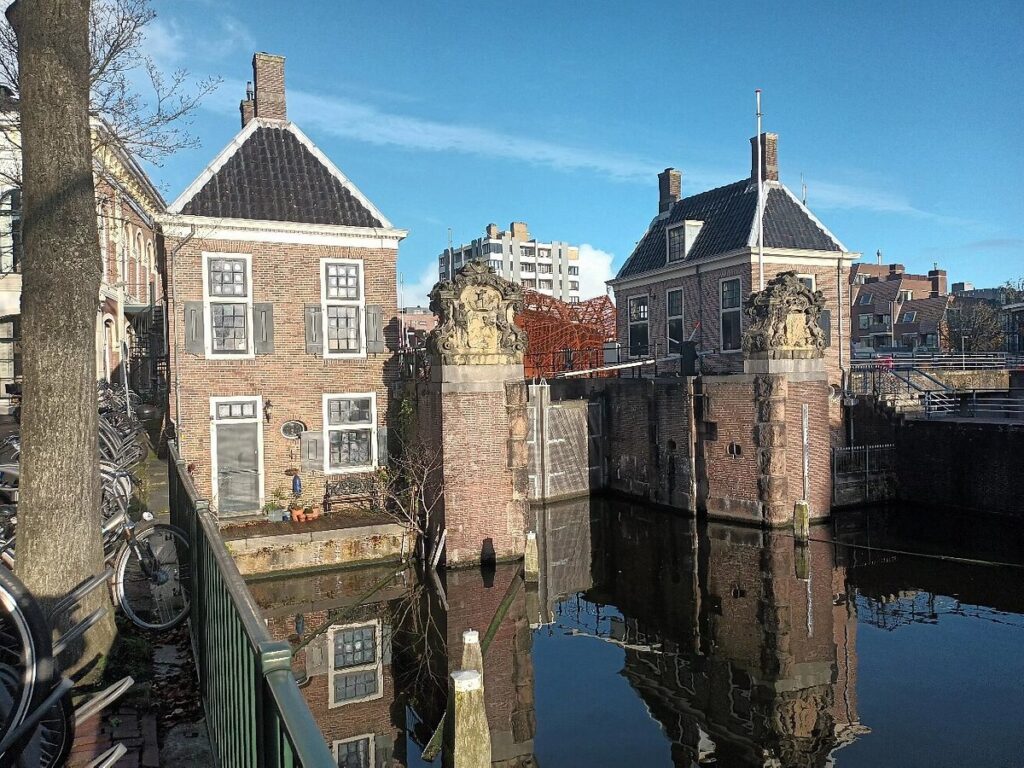
The construction was part of a large-scale renovation of the lock area. The lock was drained from 1722 to 1724, after being in continuous operation from 1544, and completely rebuilt. The dimensions remained the same, but the roof vault was replaced by a fixed bridge.
The larger of the two houses was originally the office of the Admiralty, which, in order to pay for the protection of the merchant navy, was allowed to levy import and export duties on the goods transported over the Zaan. Since Napoleon, the cottage has been used to house customs, as an office for the collection of excise duties and import fees. Hence the name: 'excise house'.
The smallest house was the residence of the tenant of the lock, who was also a lock keeper. The mason was paid 2100 guilders for the construction of the lock keepers house. Unfortunately, the Hoogheemraadschap has not kept a list of lock keepers, but a publication by the Friends of the Hondsbossche states that eighteen different tenants were contracted from 1724 to 1905. There is a good chance that they have lived in the house. There were two women among them, both widows who continued the contract of their deceased husband-lock keeper. And also two sons who took over their father's contract. After 1905, of course, a few more lock keepers lived in the house, as can be seen from one of the other columns on this site. It is hard to imagine in this day and age, but they lived with their whole family in that beautiful but very small house.
On January 1, 1885, the Hoogheemraadschap Uitwaterende Sluizen took over both the lock and the lock keepers house from the Hondsbossche for 44,450 guilders; in 1935 the excise house was acquired from the Department of Domains . It was not expensive: 400 guilders.

Because the houses rested on the foundations of the lock on one side, they slowly but surely sagged into the soft Zaan soil on the other side. Due to the construction of the current pumping station in the 1960s, the situation became so serious that both houses were carefully demolished in 1964 by contractor Hillen and Roossen. All the stones were chipped clean and the wood was numbered. In 1970, the houses were carefully rebuilt in their original state by the Brand company from Zuidoostbeemster. In 1997, the houses were transferred by Uitwaterende Sluizen as protected cultural heritage to the Hendrick de Keyzer association
Both houses were rented on and off after their reconstruction in 1970. The lock keeper's house has been empty for several years. The excise house has been rented. The outside of the houses were painted in the spring of 2023. The lock keeper's house has also been renovated on the inside and is equipped with central heating and ventilation.
During the carpenters' lunch break, I went to take a look inside both houses. To my surprise, both houses have a beautiful tiled fireplace. When I showed the photos of this at the coffee table with the fellow lock keepers, the Zaankanters told me that such a chimney is called a 'smuiger', a typical Zaan phenomenon. The hundreds of tiles of the smuigers in the houses all feature biblical scenes. Those in the lock keepers' houses also have a mention of the relevant Bible book and the location of the text with each picture.
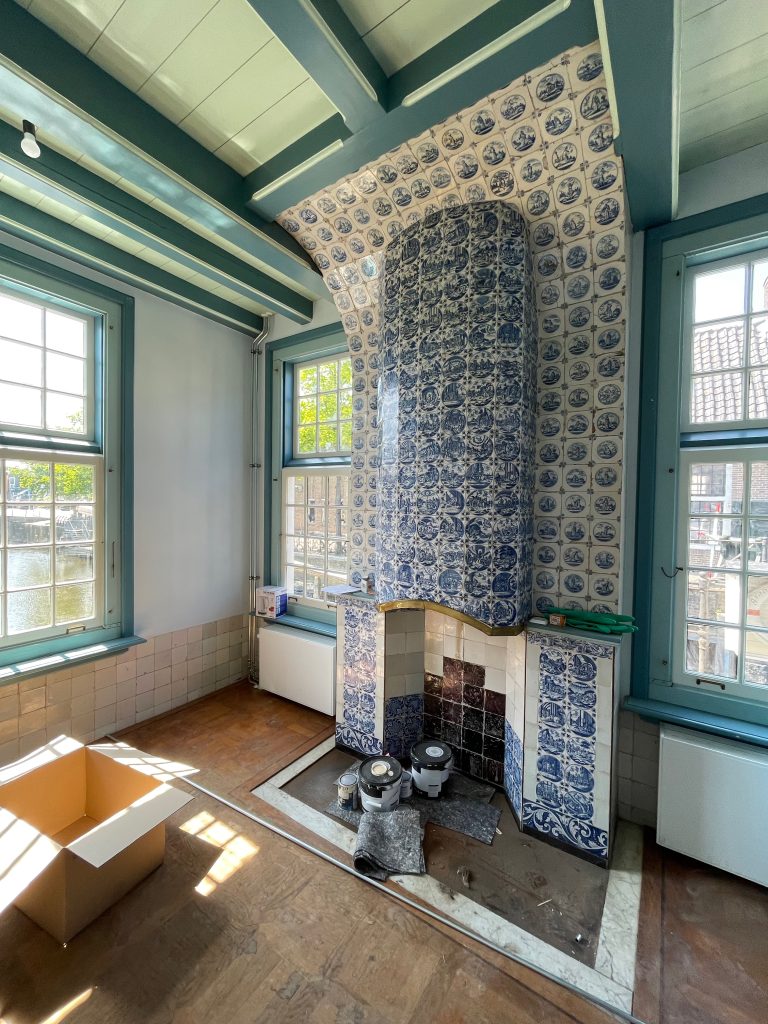


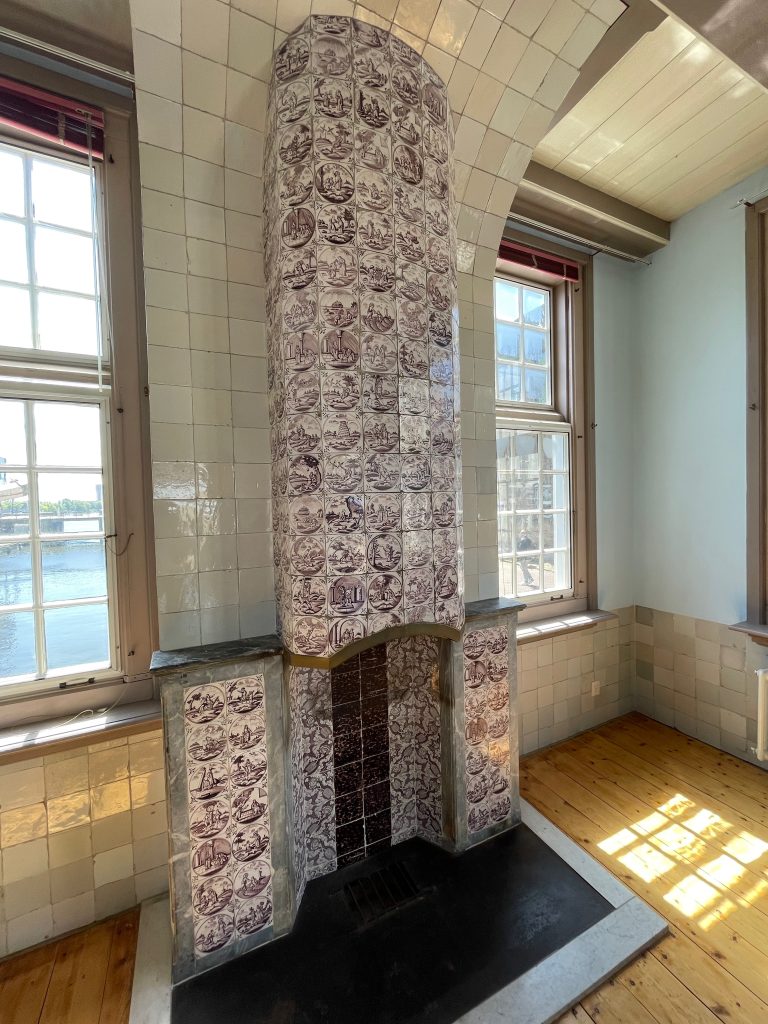
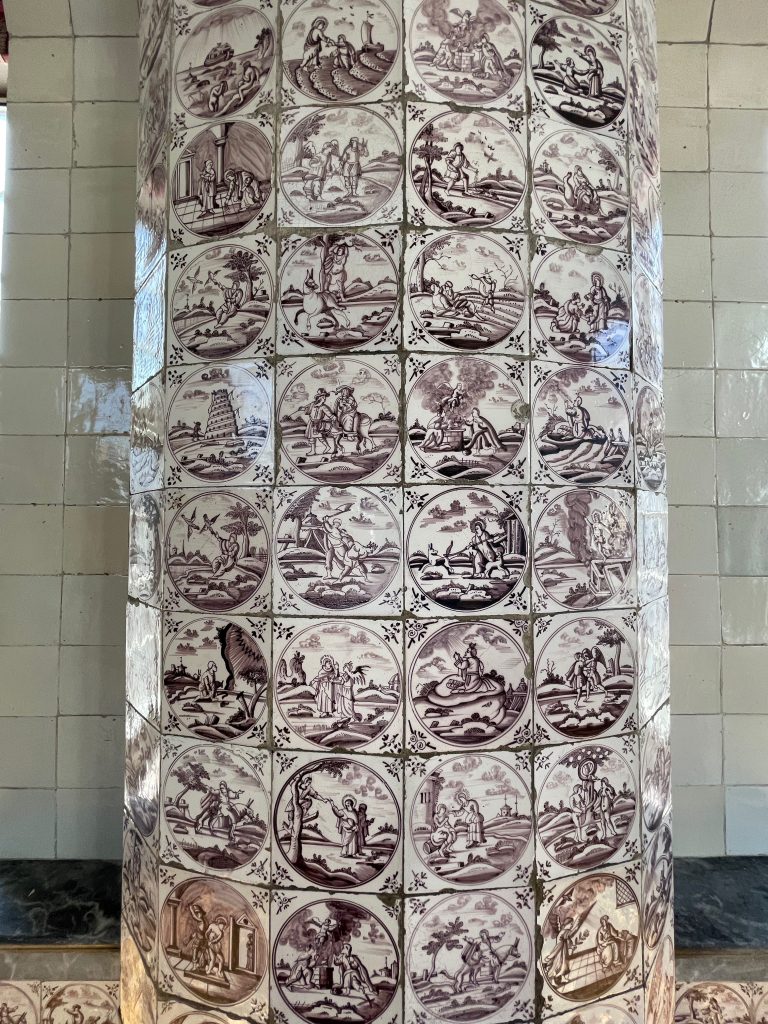
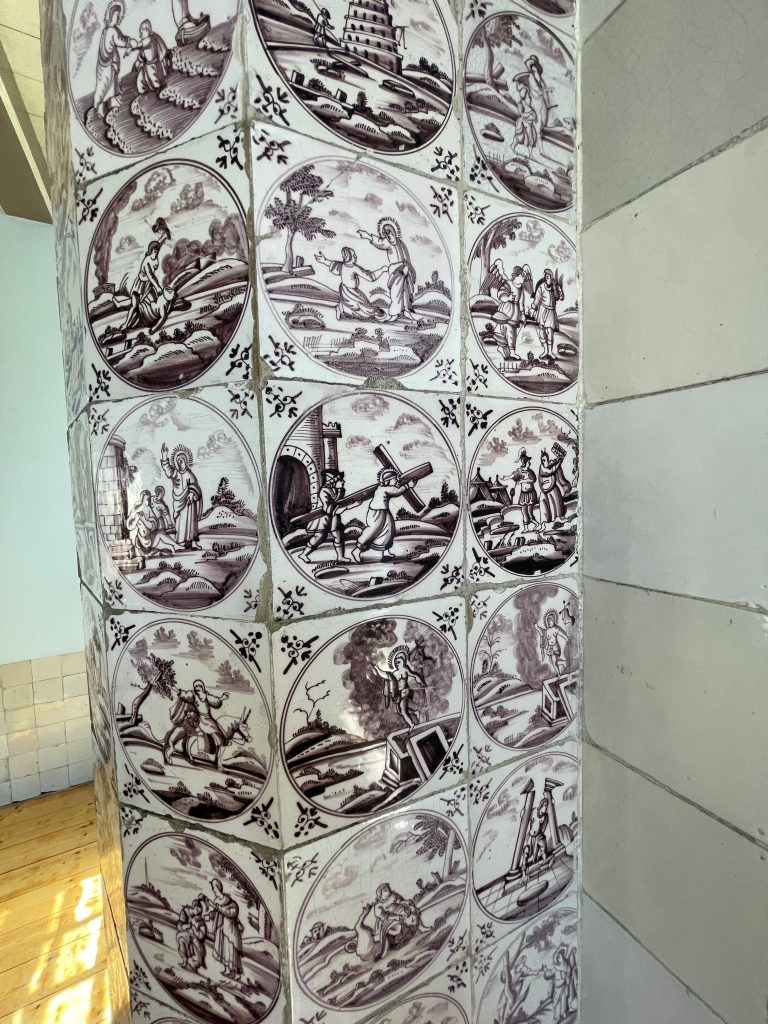
One of the fellow lock keepers had heard from Niels, who left several years ago as the last tenant of the lock keepers house, that in the cold winters the lock keepers gathered their families in front of the smuiger to keep warm. The children took turns pointing to a tile, on which the lock keeper or his wife told the corresponding Bible story. That, in addition to spreading warmth, is certainly the function of such a smuiger and is also a heartwarming story that deserves to be passed on.
But it is unfortunately not true. The smuigers were donated in 1970 by the municipality of Zaandijk to Uitwaterende Sluizen for the reconstruction of the houses. One was in the attic of the town hall and the other came from a building to be demolished at Hazepad 11. The lock had been closed for five years by then and the lock keepers children therefore had to miss those educational Bible stories.
Lock keeper, July 2023
